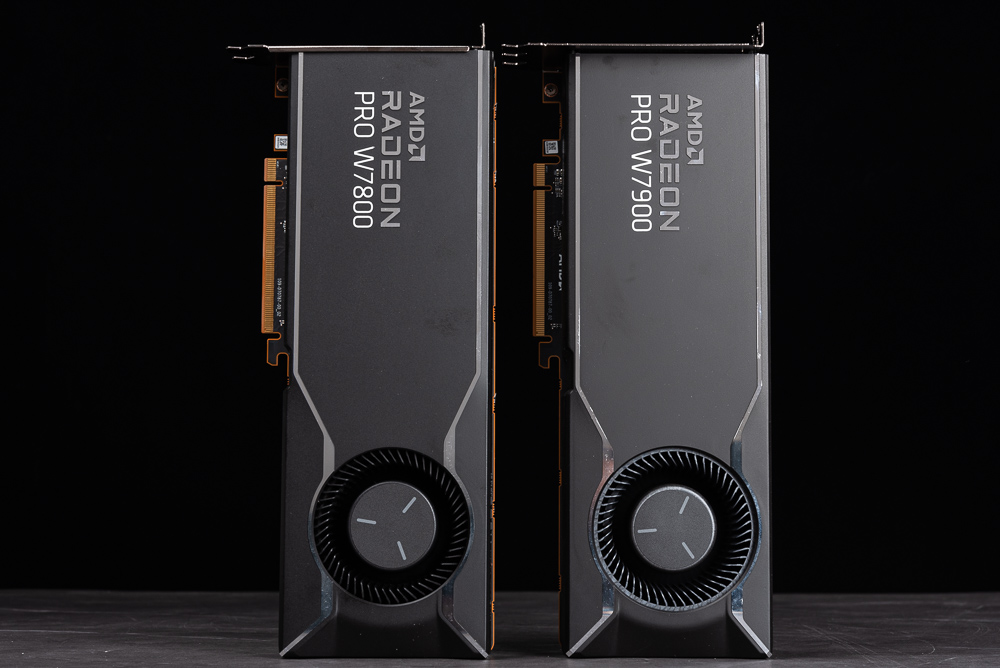
AMD has introduced the next-generation Radeon Pro W7900 and W7800 workstation graphics cards, built on the RDNA 3 architecture. These graphics cards are geared towards workstations, professional graphics, and accelerated computing, offering unmatched performance value and future-facing features such as DisplayPort 2.1, and AV1 codec, among others. Contrasting with the Radeon RX 7000 series gaming graphics cards, the Radeon Pro W7900 can house up to 48GB GDDR6 ECC memory, satisfying the requirements of professional AV, special effects, 3D rendering, and design work.
AMD Radeon Pro W7900 and W7800 workstation graphics cards
The AMD Radeon Pro W7900 and W7800 workstation graphics cards utilize the RDNA 3 architecture and Chiplet small chip packaging technology. The Graphics Compute Die (GCD) employs the cutting-edge 5nm process to balance performance and power consumption, while the memory controller and Infinity Cache are constructed using a more mature 6nm process for the MCD.
RDNA 3’s Graphics Compute Die (GCD) has also seen improvements, encompassing a unified RDNA 3 compute unit, a novel Display Engine, and a new Dual Media Engine. The updated core contains 64 Dual issues SIMD units, which can double the instruction dispatch rate, adeptly managing FP, Integer, AI, and other computations.
In a similar vein, each Compute Unit (CU) features two AI acceleration units, facilitating a 2.7x boost in AI performance. The second-generation ray tracing acceleration technology enhances the ray tracing performance of each CU by 50%.
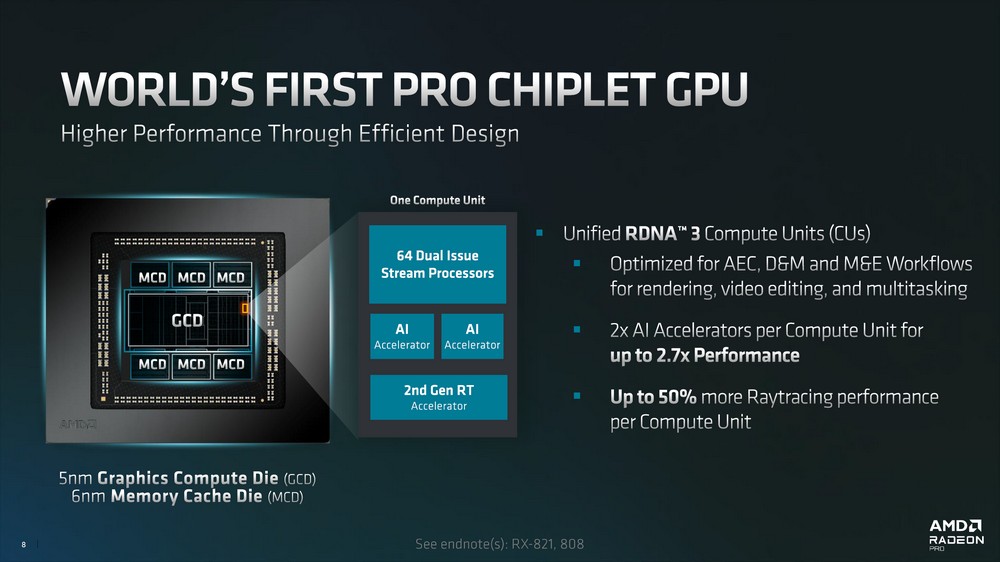
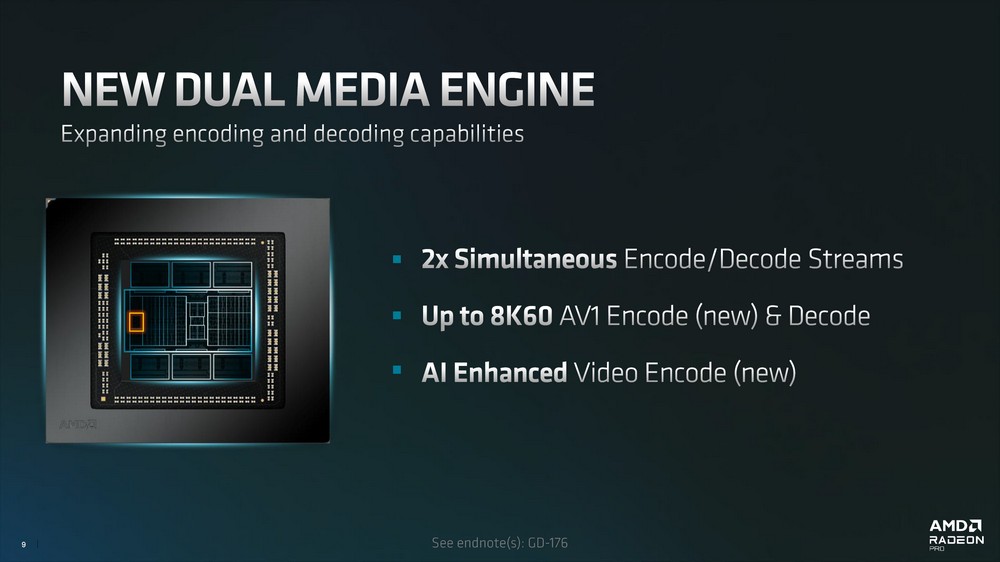
The new AMD Radiance Display engine, incorporated within the RDNA 3 architecture, is compatible with the industry’s latest DisplayPort 2.1 output specifications, allowing for a display bandwidth of up to 77.4 Gbps across four lines. It can support 8K60Hz, full-color 4:4:4 output specifications, and 30 bpp with HDR10.
Moreover, this generation introduces dual media engines. In addition to the original AVC / HEVC codec, it also includes AV1 encoding and decoding capabilities, supporting resolutions up to 8K60Hz, as well as AI-accelerated audio and video encoding features.
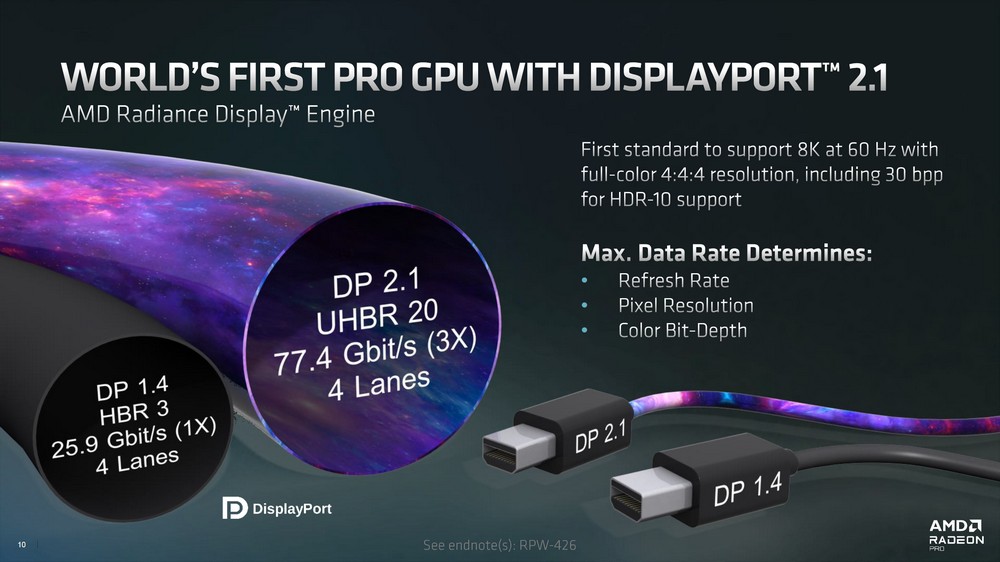
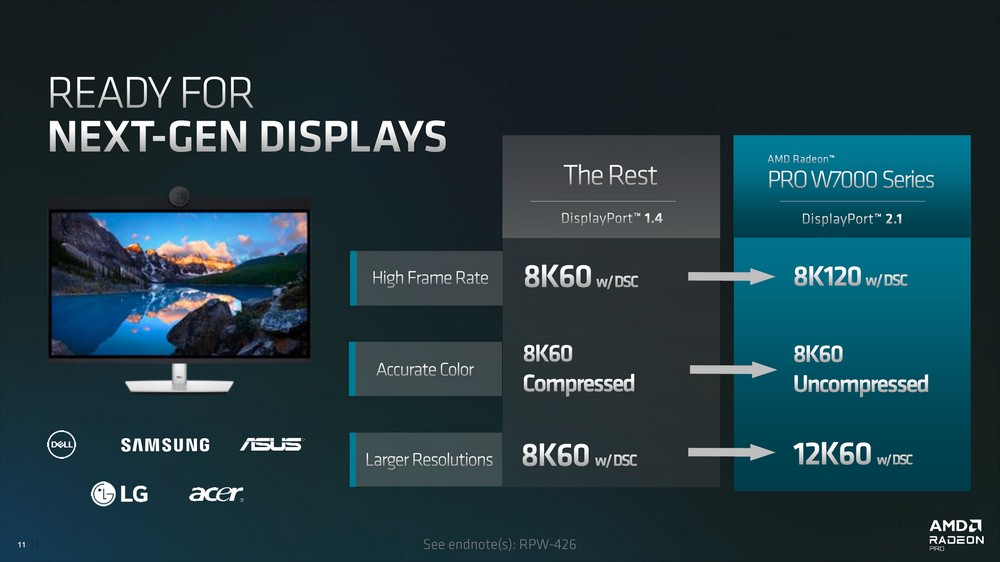
AMD Radeon Pro W7900 vs. W7800 Workstation Graphics Cards Out of the Box
In terms of specifications, the AMD Radeon Pro W7900 matches the Radeon RX 7900 XTX, while the Radeon Pro W7800 parallels the overlooked Radeon RX 7800 series. The distinguishing factors for the Radeon Pro series are the larger GDDR6 ECC memory and reduced TBP power consumption.
The Radeon Pro W7900 features 96 CU compute units, 6144 SP stream processors, 96 RA ray tracing acceleration units, 192 AI acceleration units, a GPU Boost clock frequency of 2495 MHz, a sizable 48GB GDDR6 ECC memory and a 96MB Infinity Cache. The graphics card’s TBP is set at 295W, with a price tag of $3999.
The Radeon Pro W7800 comprises 70 CU compute units, 4480 SP stream processors, 70 RA ray tracing acceleration units, 140 AI acceleration units, a GPU Boost clock frequency of 2499 MHz, 32GB GDDR6 ECC memory, and a 64MB Infinity Cache. The graphics card’s TBP is set at 260W, and it is priced at $2499.
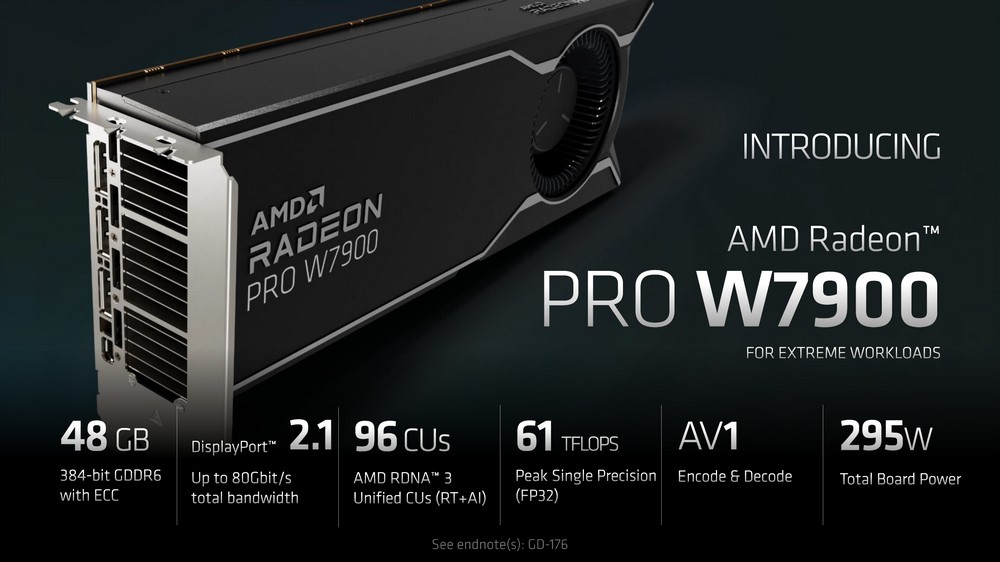
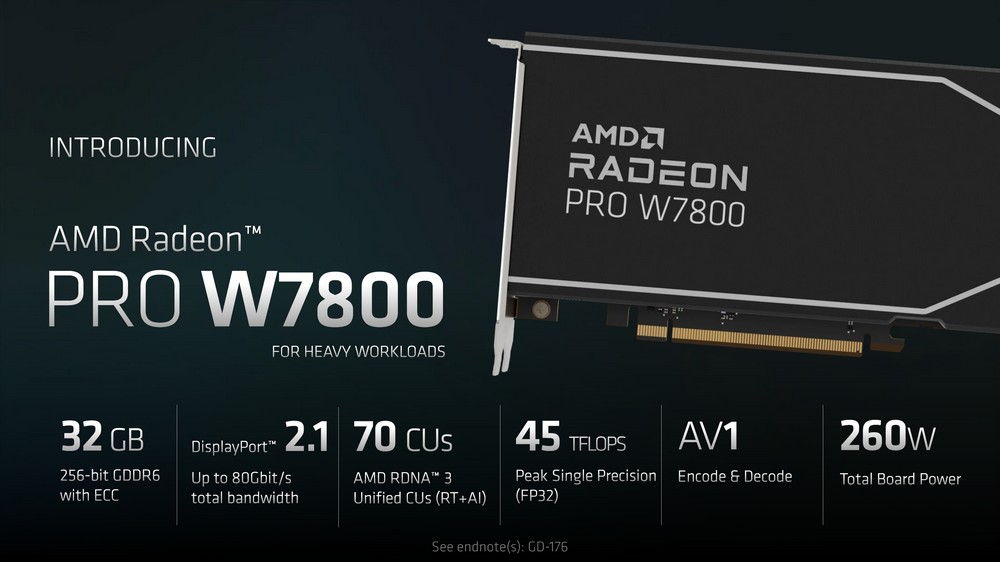
While the AMD Radeon Pro W7900 and W7800 may not fully surpass NVIDIA in performance, they provide professional users with more cost-effective choices when considering performance per dollar and equivalent memory capacity. They also offer future support for DisplayPort 2.1. The Radeon Pro W7900 and W7800 workstation graphics cards are anticipated to be released in the second quarter of this year.
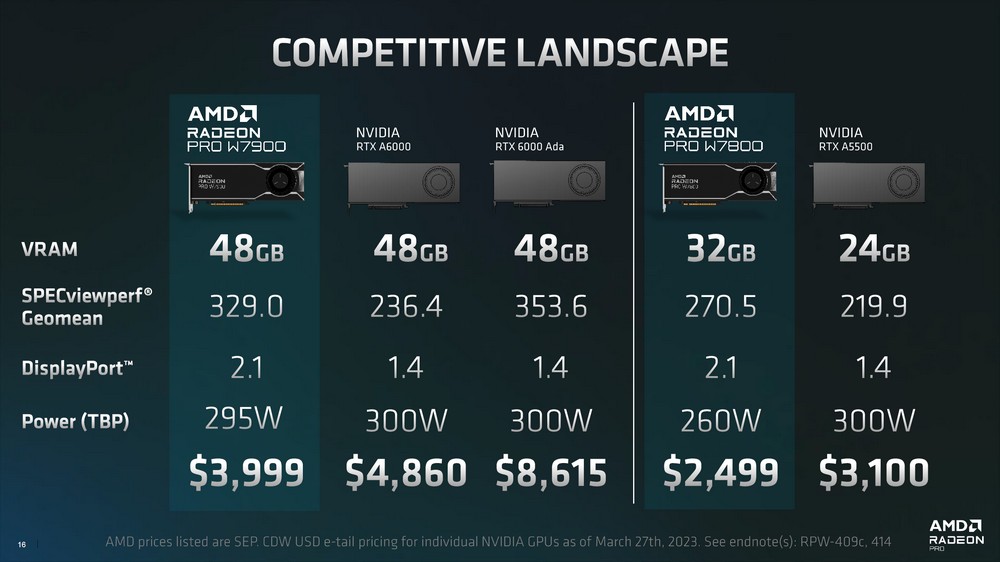
The AMD Radeon Pro W7900 and W7800 workstation graphics cards are designed with blower fan radiators, a design element popular in workstations and servers. They sport a minimalistic and subdued aesthetic, featuring a solid, black metallic shell accentuated with bright silver lines and product models.
The W7900 requires a 3-slot installation space, while the W7800 fits into a standard 2-slot setup. Both cards are identical in length, measuring 28cm.
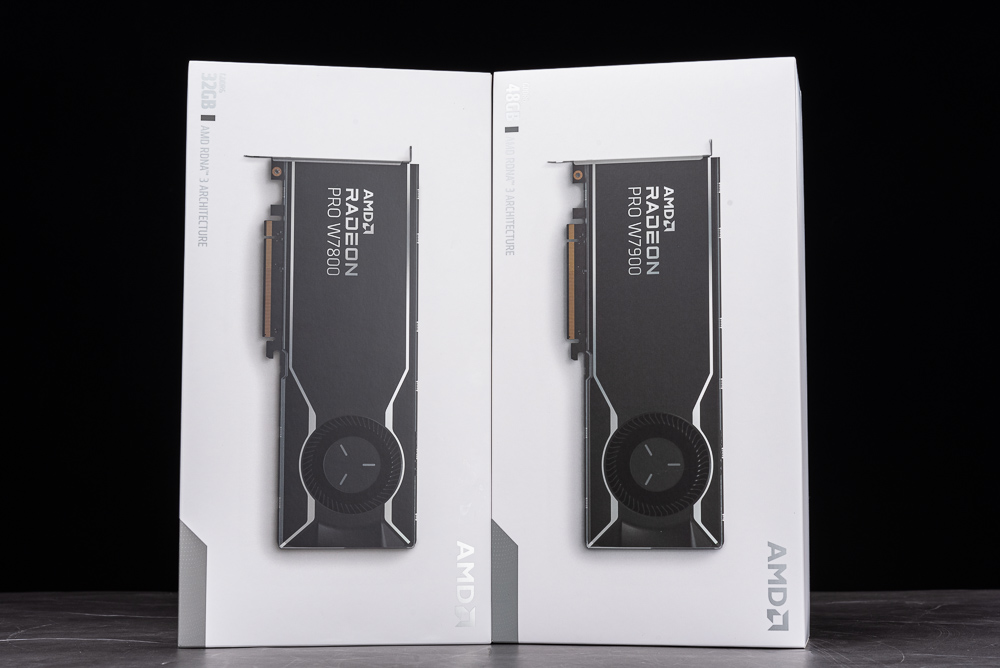
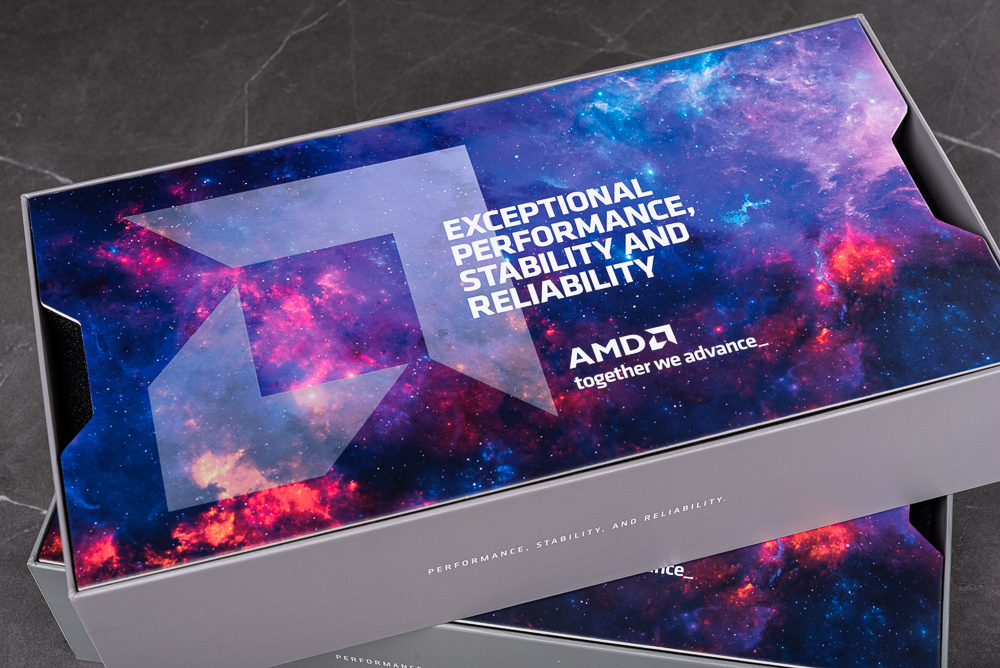
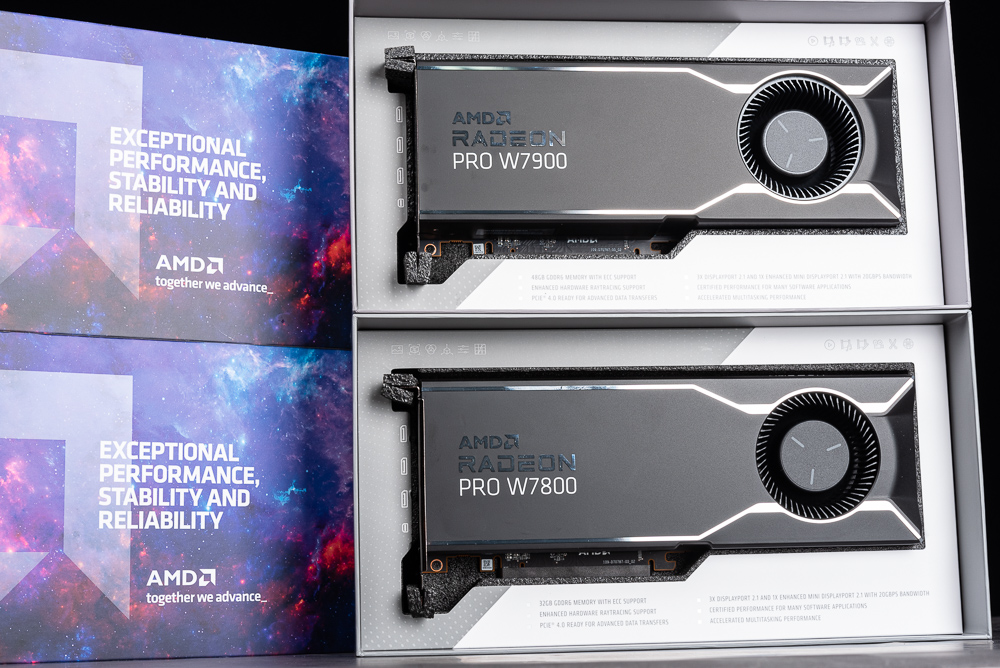
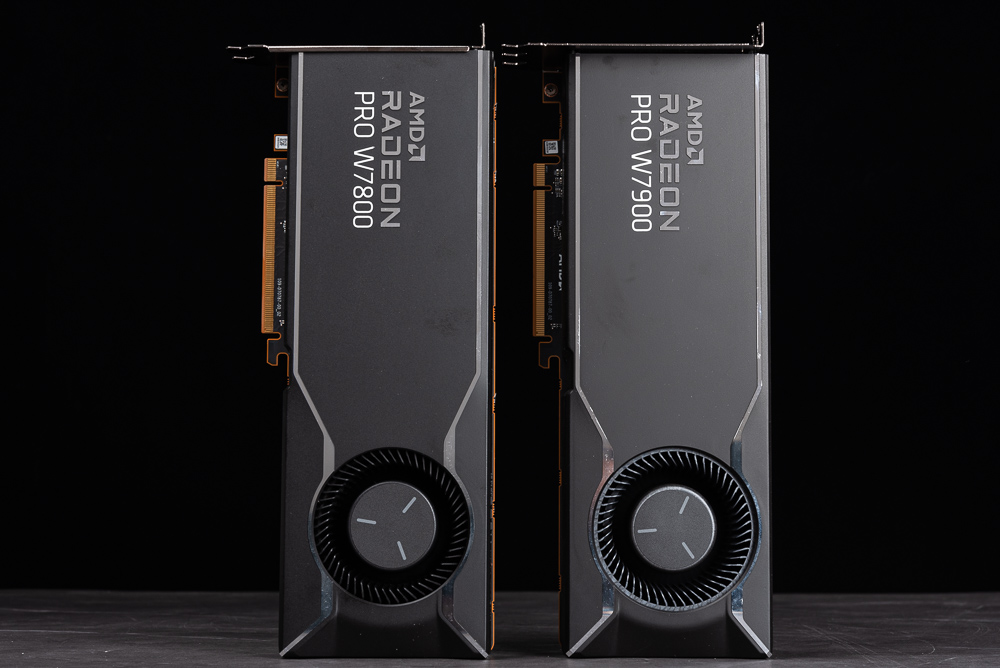
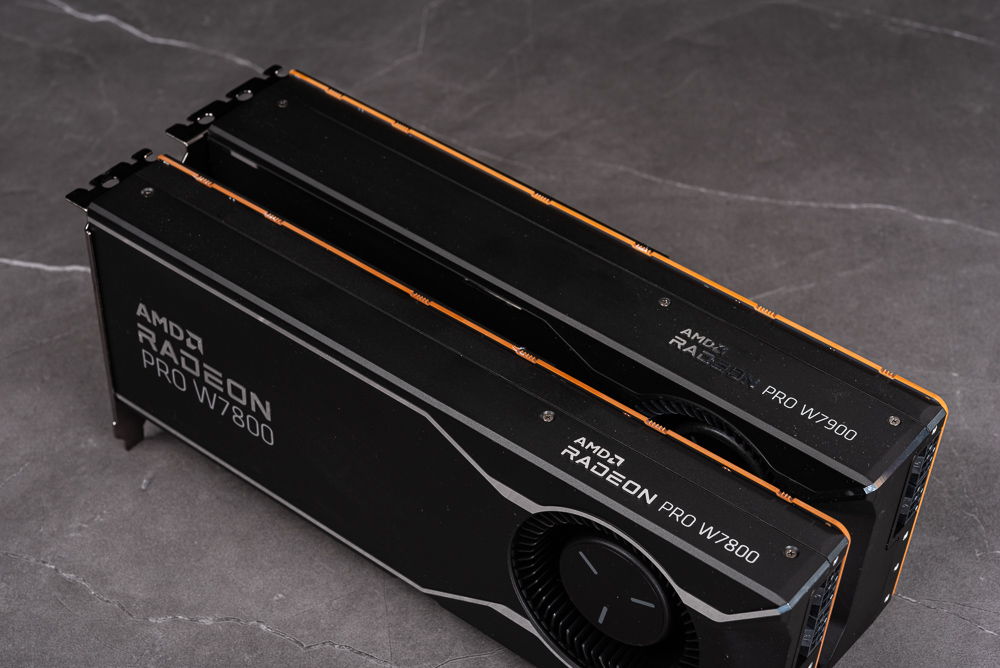
Both the Radeon Pro W7900 and W7800 necessitate two PCIe 8-pin connectors for power. Conveniently, the power supply connectors are located at the front of the graphics card, making them easily accessible for workstation and server expansion.
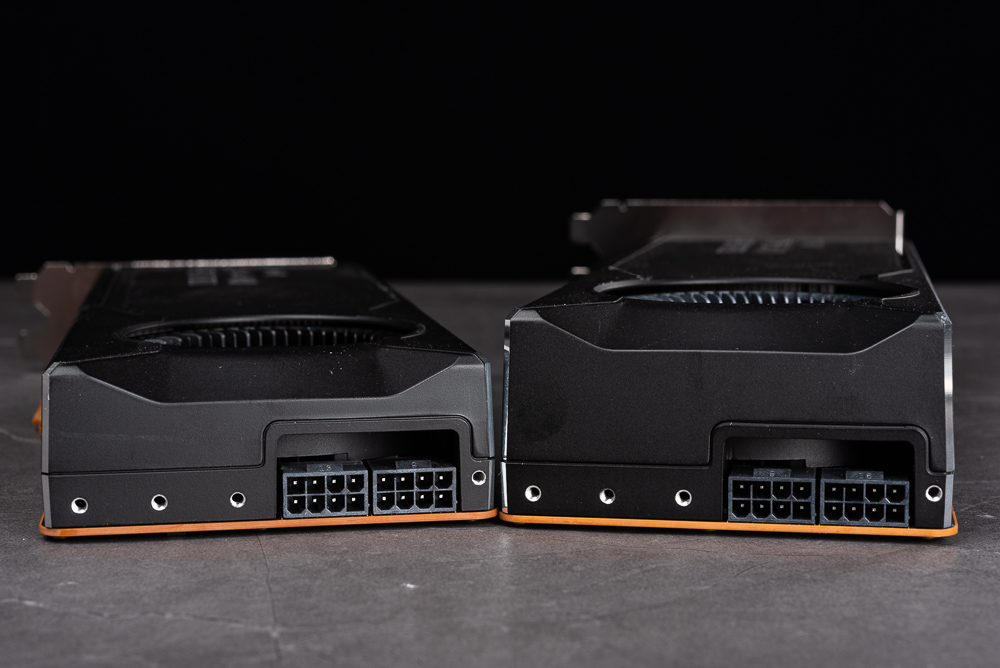
The display output provides 3 DisplayPort 2.1 and 1 Enhanced Mini DP 2.1 video output port.
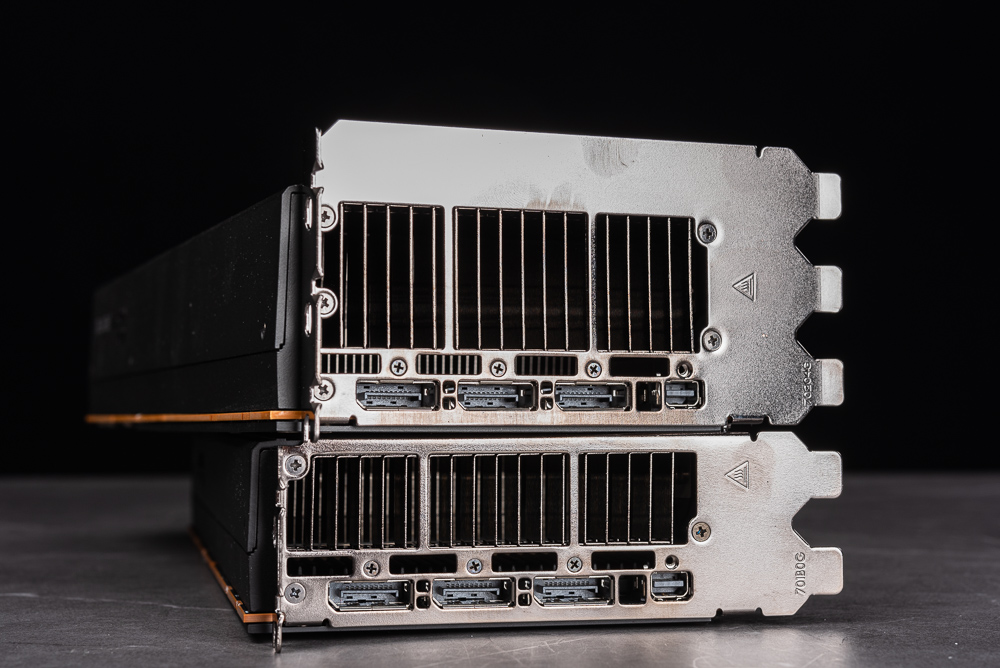

AMD Radeon Pro W7900 and W7800 Creation and Rendering Performance
For performance evaluation of the Radeon Pro W7900 and W7800 workstation graphics cards, we utilized tools such as SPECviewperf, Blender, UL Procyon, and PugetBench, which are commonly referenced in professional fields, to assess their rendering and computing capabilities.
Test Platform Configuration:
- Processor: Intel Core i9-13900K
- Motherboard: ASUS ROG MAXIMUS Z790 HERO
- Memory: KLEVV DDR5-7200 16GBx2
- Graphics Card: AMD Radeon Pro W7900 and W7800
- System Disk: Solidigm P41 Plus 1TB PCIe 4.0 SSD
- Cooling System: NZXT 360mm Water Cooling
- Power Supply: Seasonic VERTEX GX-1000
- Operating System: Windows 11 Pro 21H2 64bit, with Resizable BAR On
- Driver Version: AMD Software Pro 23.10.01.18
The Procyon AI Inference test provides inference testing for various AI engines, using common neural networks such as MobileNet, ResNet 50, Inception V4, DeepLab V3, YOLO V3, and Real-ESRGAN. In addition to the total score provided by Procyon, the average inference time and the number of inferences for each inference item can also be examined.
With the Windows ML engine, the W7900 achieved an inference time of 0.44ms in MobileNet V3, an average of 1.52ms in ResNet 50, an average of 6.59ms in Inception V4, an average of 13.81ms in DeepLab V3, an average of 6.36ms in YOLO V3, and an average inference time of 79.88ms in Real-ESRGAN. It accumulated a total score of 892 points.
The W7800 achieved an inference time of 0.46ms in MobileNet V3, an average of 2.10ms in ResNet 50, an average of 7.78ms in Inception V4, an average of 15.38ms in DeepLab V3, an average of 8.37ms in YOLO V3, and an average inference time of 102.26ms in Real-ESRGAN. It gathered a total score of 734 points.
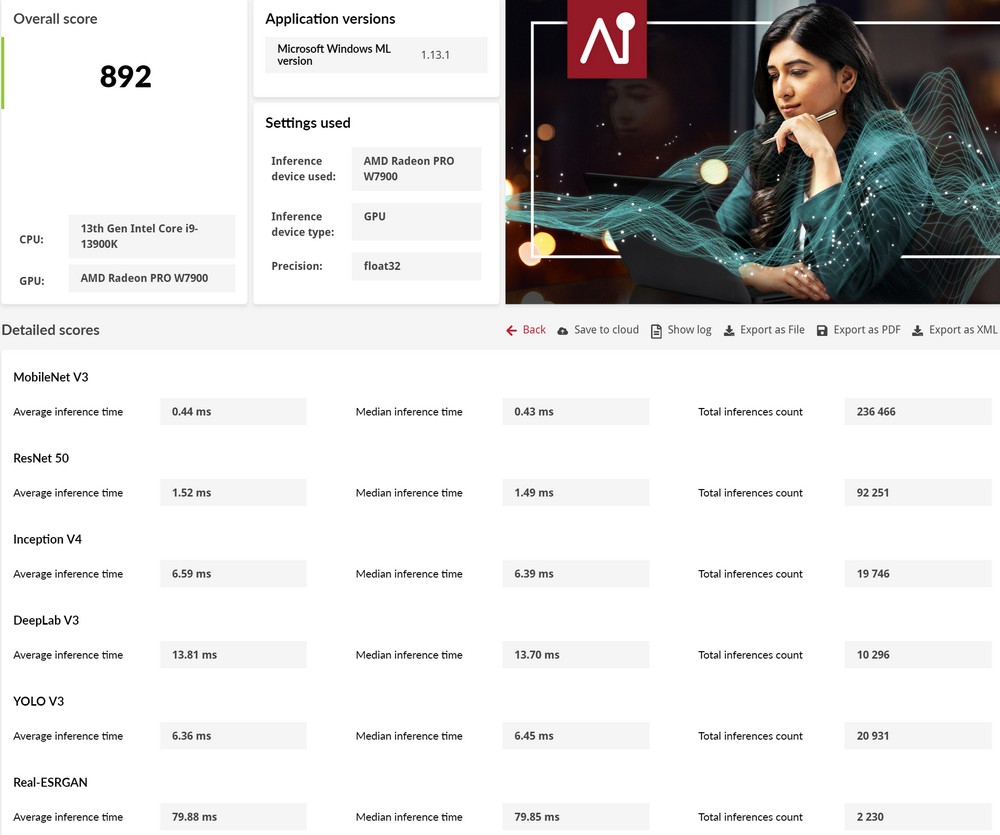
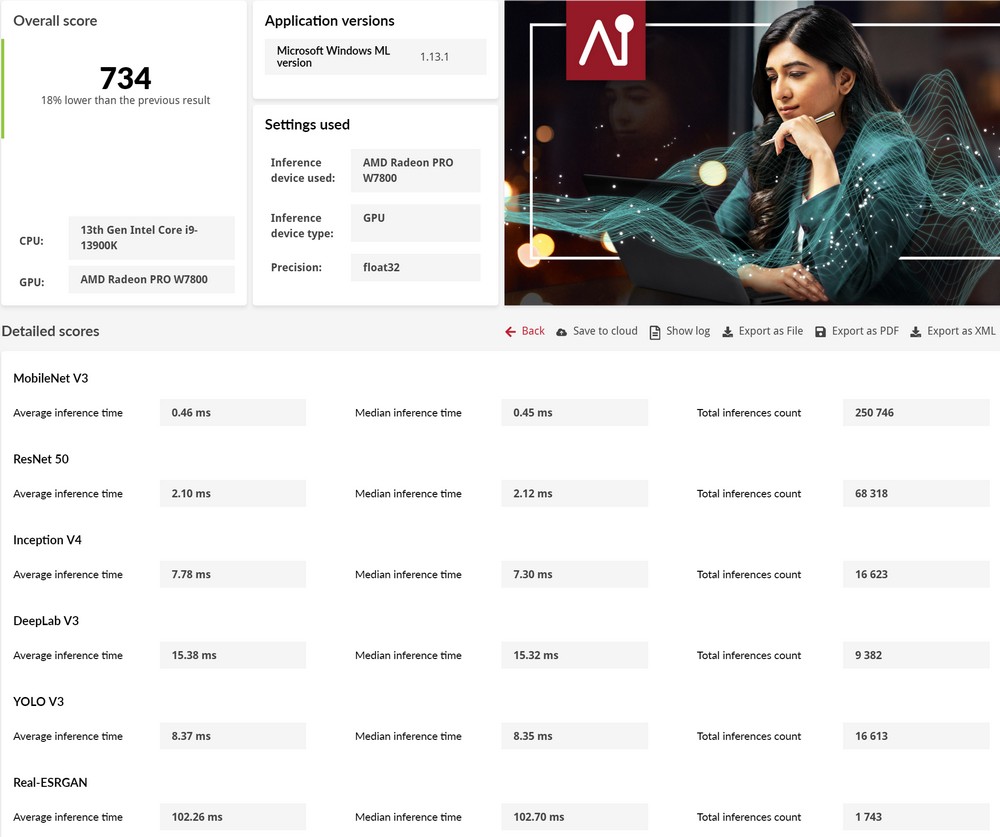
The PugetBench for DaVinci Resolve test targets 4K and 8K image tests, encompassing media such as 4K H.264 150mbps 8-bit, 4K ProRes 422, 4K RED, 8K H.265 100mbps, 8K RED, among others. It employs OpenFX and GPU specific effects like Fusion to evaluate the video and video creation performance of the computer.
The W7900 secured a total score of 2743 points, with 234 points in 4K Media, 182 points in GPU Effects, and 407 points in Fusion. The W7800 achieved a total score of 2780 points, with 229 points in 4K Media, 128 points in GPU Effects, and 477 points in Fusion.
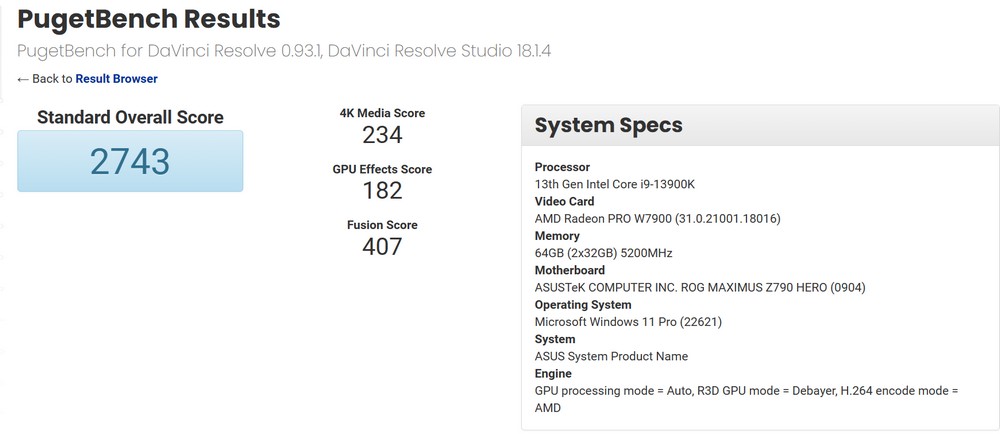
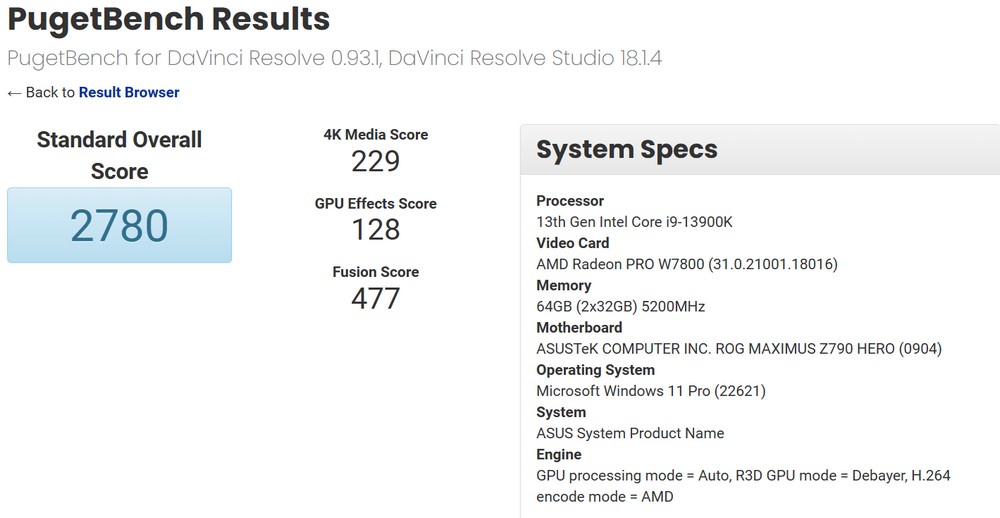
The PugetBench for Photoshop test uses an 18MP .CR2 RAW image for editing tests which include opening, zooming out, rotating, selecting with the Magic Wand, refining masks, utilizing the Paint Bucket, applying gradients, performing Content Aware Fill, saving .PSD files, and opening .PSD files. It also uses filter processing tests like Camera Raw Filter, Lens Correction, Reduce Noise, Smart Sharpen, Field Blur, Tilt-Shift Blur, Iris Blur, Adaptive Wide Angle, and Liquify among others.
The W7900 reached a total score of 1700 points, with 160.1 points in GPU, 197.1 points in General, and 142.9 points in Filter tasks. The W7800 obtained a total score of 1740 points, with 160.1 points in GPU, 204.1 points in General, and 143.9 points in Filter tasks.
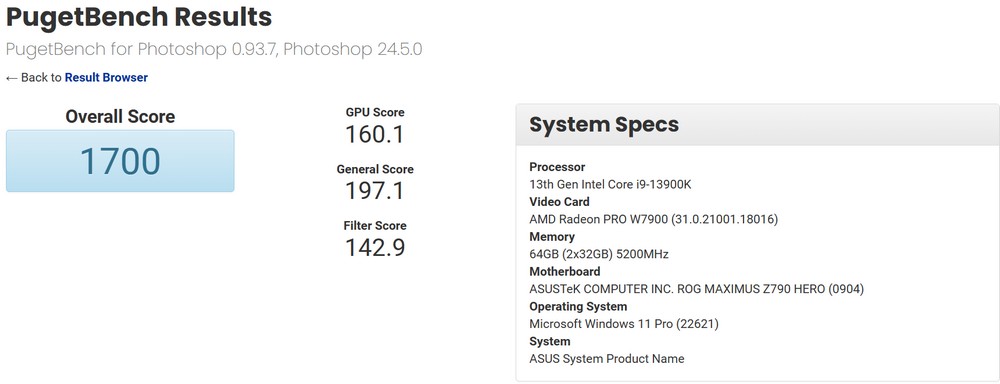
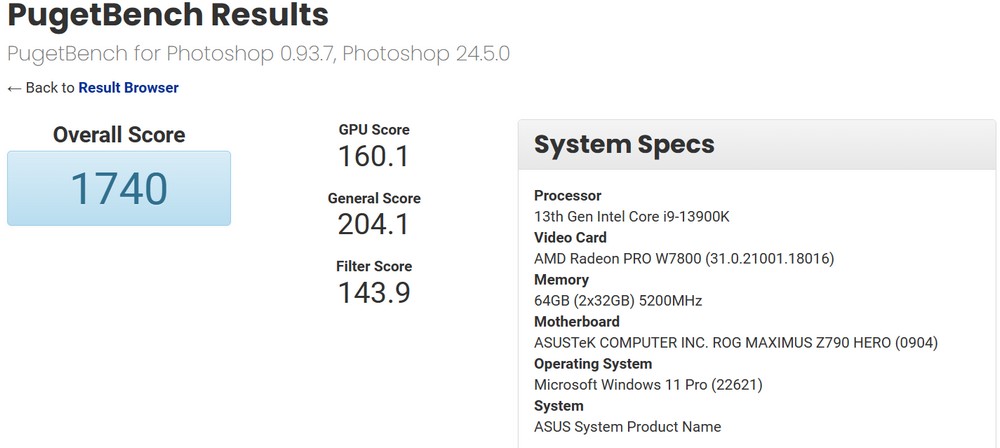
Blender is a cross-platform, open-source 3D creation tool supporting various operations such as modeling, rigging, animation, simulation, rendering, compositing, and motion tracking. For this test, we used Blender Benchmark 3.5.0 to test the rendering work of the Demo project.
In the Blender Benchmark test, the W7900 scored 1851.595 points in the monster scene, 963.6 points in the junkshop scene, and 835.828 points in the classroom scene. On the other hand, the W7800 scored 1275.331 points in the monster scene, 692.645 points in the junkshop scene, and 6222.695 points in the classroom scene.
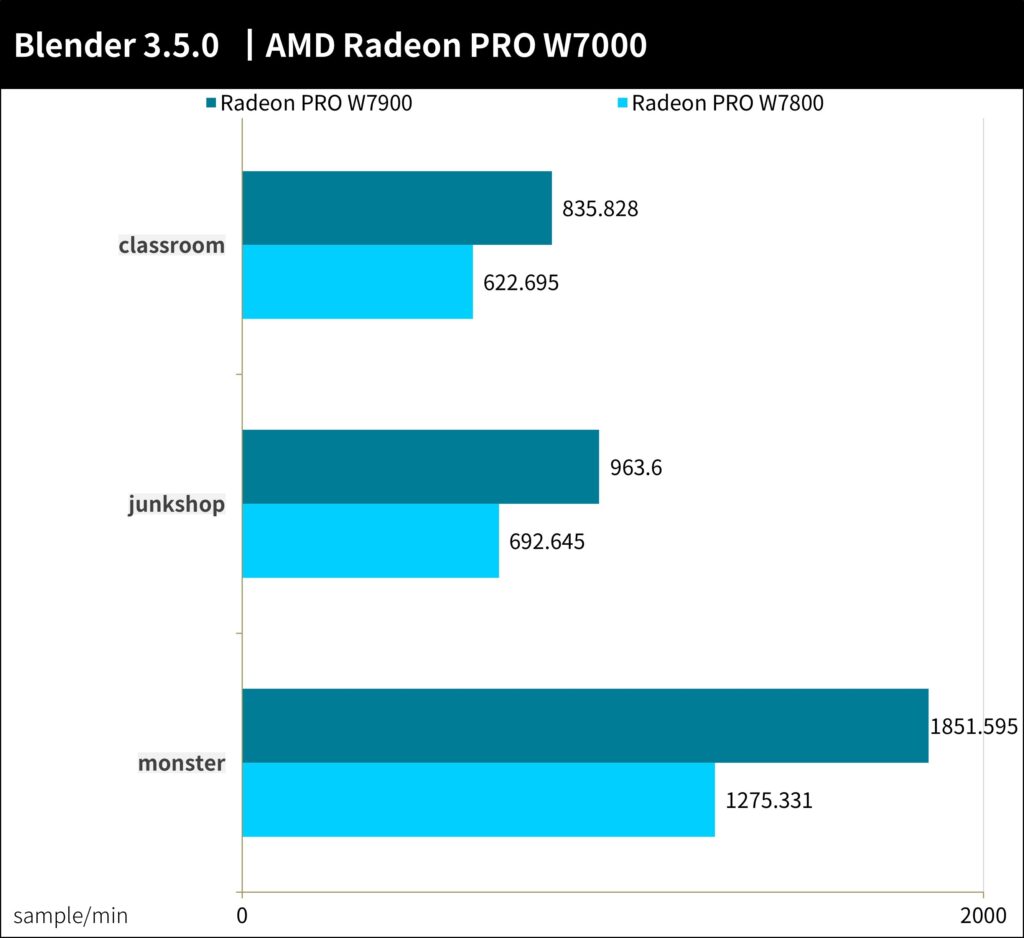
SPECviewperf 2020 is a standardized graphics performance benchmarking tool, developed with a focus on professional applications. It tests a variety of professional computer graphics software such as: 3ds Max, Catia, Creo, Energy, Maya, Medical, SNX, SolidWorks among others, conducting drawing tests and engineering simulations.
The tests are conducted at a 3840 x 2160 resolution, with scores given in frames per second (FPS). It is evident that both the W7900 and W7800 can achieve high FPS performance across a range of tasks, providing professional creators, simulation experts, and calculators with ample graphics performance.
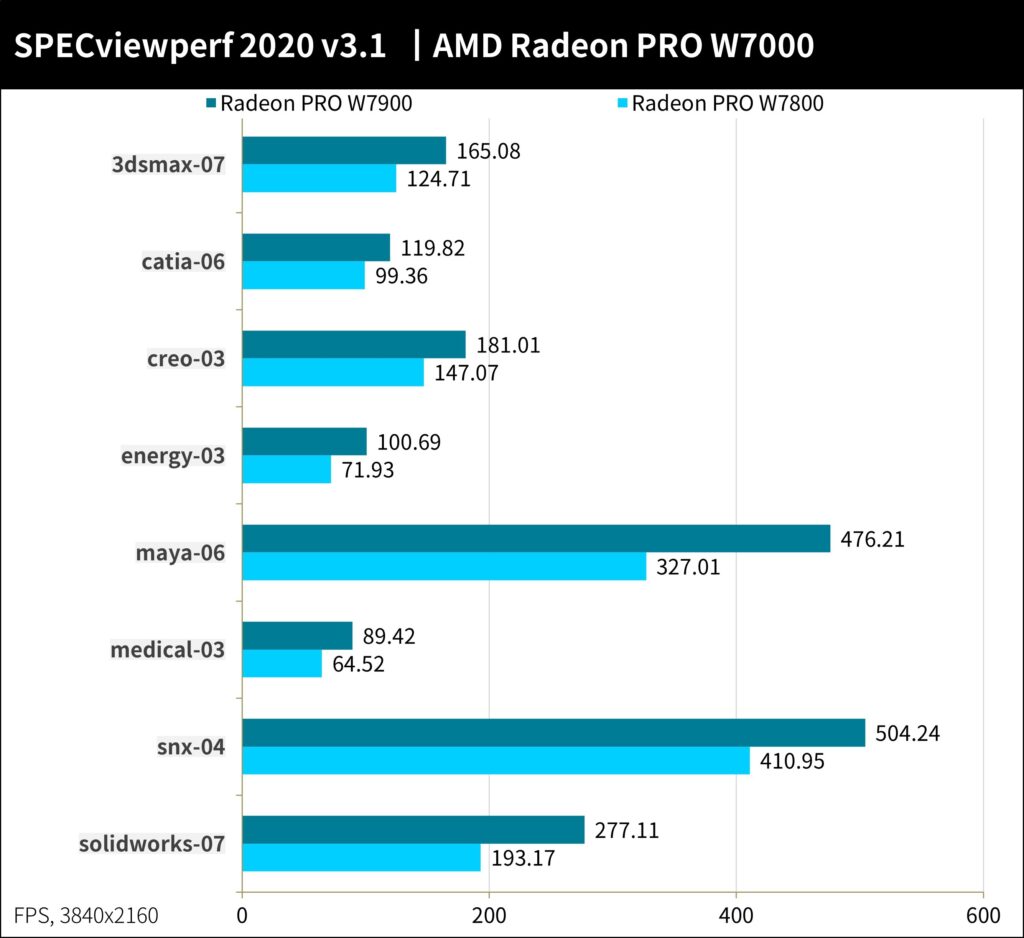
AMD Radeon Pro W7900 and W7800 Power Consumption and Temperature Measurement
For the graphics card power consumption and temperature test, we utilize the Blender and DaVinci Resolve 18 test project to record GPU temperature and power consumption. The highest power consumption is used for burn-in testing by Furmark.
In terms of graphics card temperature, the W7900 peaks at 71°C, while the W7800 reaches 73°C. In the TBP power consumption test for the graphics cards, under the Furmark stress test, the W7900 draws up to 288.2W, and the W7800 consumes up to 252.8W.
Summary
The AMD Radeon Pro W7900 and W7800, leveraging the RDNA 3 architecture, Chiplet packaging, and a new generation of computational units, AI and RT acceleration units, and supported by a maximum capacity of 48GB GDDR6 ECC memory and Infinity Cache, offer professionals a cost-effective solution with maximum memory capacity.
With an eye towards the large memory requirements that professional work necessitates, the Radeon Pro W7900 and W7800 are more than capable of meeting the professional needs of workstation users through their impressive performance and cost efficiency.
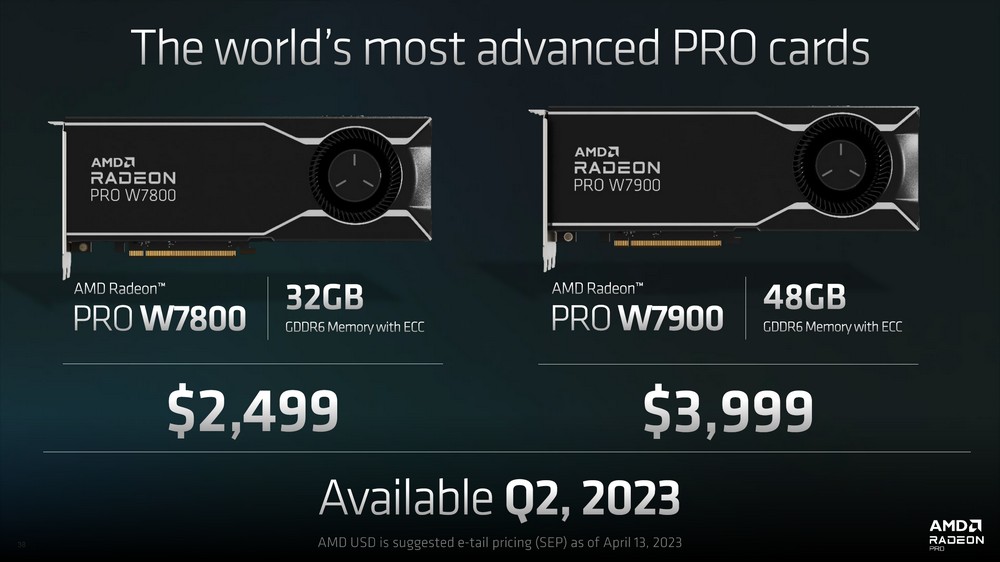
If this article is helpful for you, please share this article with your friends on social media. Thank you!
This article is based on the personality of the reviews. You are responsible for fact-checking if the contents are not facts or accurate.
Title: Unboxing and Testing AMD Radeon Pro W7900 and W7800 Workstation Graphics Cards / Featuring RDNA 3 and 48GB ECC Memory